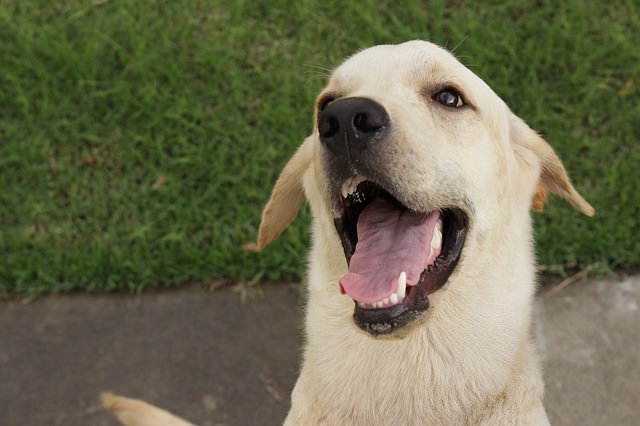Nosebleeds (epistaxis) are not extremely common among our pet dogs. When you do notice a nosebleed in your dog, it is wise to be alert. The following list includes some of the things that I consider when I see a canine patient for a bloody nose. Epistaxis can range from blood tinged fluid coming from the nose to outright drops of blood actively bleeding from the nostrils.

Foreign bodies
Foreign bodies can become lodged in the nasal cavity. Pieces of grass or plant matter have been found in the nose of affected dogs. Many times the history will include some time spent outside, running or snooping in fields or wooded areas. Because the nose is not a bacteria free environment normally and is very vascular and sensitive, any suspected foreign body should be removed by a veterinarian under sedation and followed up with appropriate medications.
Infections
As I mentioned, the nose is never sterile. It has colonies of normal bacteria all the time. These bacteria are called normal flora and disruption to their usual numbers and health can adversely impact your dog. Not only can bacteria that are not a part of your dog’s normal flora get into his nose and become an infection, also viruses and fungi can be an issue as well. Many upper respiratory bacterial infections will respond to first line antibiotics, but sometimes viruses and bacteria will work together to make your dog ill.
Viruses do not respond to antibiotics at all, so if your vet suspects a viral infection, he/she may prescribe an antiviral or maybe just symptomatic treatment to keep your dog comfortable while her own immune system battles the virus. Fungal infections in the nasal cavity can be very serious and difficult to treat and may require a very long treatment time. Your vet will know what tests to run to find out the source of the infection, if he/she thinks an infection is the cause of nasal bleeding.

Trauma
It might not seem obvious, but your dog’s nose is a very complex organ. It is filled with tiny bones called turbinates that are very fragile and vascular. The turbinates are scrolls of bone inside the nose that help to filter air and allow for heat exchange. If these fragile bones are injured, they will definitely bleed. Sometimes attacks from other animals will crush and damage these bones and commonly vehicular injury will injure the nose. In these cases, it may be obvious that the nose has sustained injury, but sometimes there is only bruising to the nose which is concealed by the hair of the muzzle. If your dog has access to other dogs or cars, your vet can radiograph his face and nose to help rule out this type of injury.
Tooth root issues
When we think of our tiny teeth, we never consider that the teeth of our canine friends are much larger and somewhat different structurally. Many of a dog’s tooth roots extend very near to the sinuses and nasal cavity. Sometimes a bloody drainage from the nostril is indicative of a deep tooth root abscess or injury to the root. Dental issues are notoriously painful so make sure that your seek help in these cases as well. You will want to make sure that your veterinary hospital offers dental radiology, so that the tooth roots can be visualized in cases where root disease is suspected.

Cancer
Cancerous masses inside the nasal cavity can bleed. It seems like these are more common in my long slender nosed breeds, like Collies or greyhounds, but any dog could be at risk. As with any suspected mass, a surgical biopsy will be required to confirm or deny the presence of malignancy. Usually a mass in the nose is not visual from the outside, even with a light source and will require some investigation, such as radiographs of the skull and nasal cavity or even nasal endoscopy.
Clotting disorder
If your dog’s body is not able to clot her blood effectively, you might notice her nose bleeding. In these cases, it is not a problem with the nose itself, but instead is a function of the body’s decreased ability to clot all of the blood. The nose is well supplied with blood so it can be an early indicator that something is amiss in the entire body, such as rat poison or a disease that hinders the body’s ability to clot normally. Clotting disorders can often be treated effectively, but without help, your dog’s life is at risk.

As you can tell, nose bleeds can be very serious indicators of trouble and should not be ignored. Not all the causes carry a poor prognosis, but all of the causes benefit substantially from finding and treating them. Utilize your veterinary team to to “nose” out the problem!
Please look me up on Twitter, Facebook and Google+ . I love hearing about your pets!
